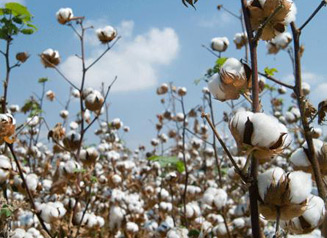


Record High Cotton Prices Drive Change
As many people have already noticed, the prices on goods manufactured from cotton have raised significantly in 2010. While this has already strongly impacted the promotional market, it is an unavoidable trend that will hit the retail market in 2011 as well. While many manufacturers are searching for ways to limit the sticker shock, changes are inevitable.
Why the Price Increase
Supply and demand is the main culprit behind the drastic changes in the price of cotton, which has increased by more than 80% since July of this year. This summer, the top 3 suppliers of cotton were hit with destructive weather that depleted much of the cotton crops that feed the U.S. market. A drought in China, major flooding in Pakistan and heavy monsoon rains in India all contributed to creating the dire cotton situation facing the world today.
In addition to natural disasters, structural changes within the Chinese economy have strongly affected the amount of cotton available for export. China's rapid growth has fueled demands to support its needs domestically, leaving the amount of cotton they are willing to export at minimal levels. They are also suffering from labor shortages and shipping capacity challenges which have aided significant price increases. As factories struggle to deal with this new set of circumstances, they have had to compete for workers by paying higher salaries. Self-imposed capacity limits set by the container shipping lines have raised the price for space availability on boats bringing goods to other countries. All of this has led to the skyrocketing cotton prices for U.S. manufacturers and will result in a steadily rising price tag on these commodities purchased by American consumers.
U.S. Manufacturers React
While prices continue to rise on cotton as well as other goods coming from China, U.S. companies have been forced to seek alternatives in order to keep their prices down. For some that will mean moving production of their goods to countries with lower labor costs and minimal customs charges or finding ways to increase production efficiency. For others it will mean adjusting the percentage of cotton used in their products and replacing it with synthetic materials. Acrylic, nylon and polyester will become more dominant and new synthetic fabrics will most likely be developed as well. Apparel made from bamboo and recycled materials will also become the leading "Green" fabrics, as they present what will inevitably be less expensive alternatives to organic cotton.
While these changes will help to minimize price increases to the consumer, the reality is that they are going to be noticeable and are likely to remain long-term. Initially it will most certainly be a shock, but these new challenges also pave the way for innovation and creativity to bring new and exciting alternatives to the market.
Why the Price Increase
Supply and demand is the main culprit behind the drastic changes in the price of cotton, which has increased by more than 80% since July of this year. This summer, the top 3 suppliers of cotton were hit with destructive weather that depleted much of the cotton crops that feed the U.S. market. A drought in China, major flooding in Pakistan and heavy monsoon rains in India all contributed to creating the dire cotton situation facing the world today.
In addition to natural disasters, structural changes within the Chinese economy have strongly affected the amount of cotton available for export. China's rapid growth has fueled demands to support its needs domestically, leaving the amount of cotton they are willing to export at minimal levels. They are also suffering from labor shortages and shipping capacity challenges which have aided significant price increases. As factories struggle to deal with this new set of circumstances, they have had to compete for workers by paying higher salaries. Self-imposed capacity limits set by the container shipping lines have raised the price for space availability on boats bringing goods to other countries. All of this has led to the skyrocketing cotton prices for U.S. manufacturers and will result in a steadily rising price tag on these commodities purchased by American consumers.
U.S. Manufacturers React
While prices continue to rise on cotton as well as other goods coming from China, U.S. companies have been forced to seek alternatives in order to keep their prices down. For some that will mean moving production of their goods to countries with lower labor costs and minimal customs charges or finding ways to increase production efficiency. For others it will mean adjusting the percentage of cotton used in their products and replacing it with synthetic materials. Acrylic, nylon and polyester will become more dominant and new synthetic fabrics will most likely be developed as well. Apparel made from bamboo and recycled materials will also become the leading "Green" fabrics, as they present what will inevitably be less expensive alternatives to organic cotton.
While these changes will help to minimize price increases to the consumer, the reality is that they are going to be noticeable and are likely to remain long-term. Initially it will most certainly be a shock, but these new challenges also pave the way for innovation and creativity to bring new and exciting alternatives to the market.
Additional MacDryverisms:
 |
 |
 |
Great products made from recycled polyester will help you forget about the rising price of cotton. Use items like this Recycled Polyester Fleece Scarf to keep people warm, proudly display your logo and feel good about doing your part! |
A plant fiber used to make common items such as tote bags, Jute will be seen in more products in the upcoming year. This Jute Non-Woven Tote is 100% recyclable and can hold up to 40 pounds! |
Soybean protein fiber is good for the earth and you. It is a renewable natural resource that is biodegradable, sustainable and eco-friendly. Experience the luxury and comfort of soybean fiber with a stylish Soybean Cotton Polo. |

